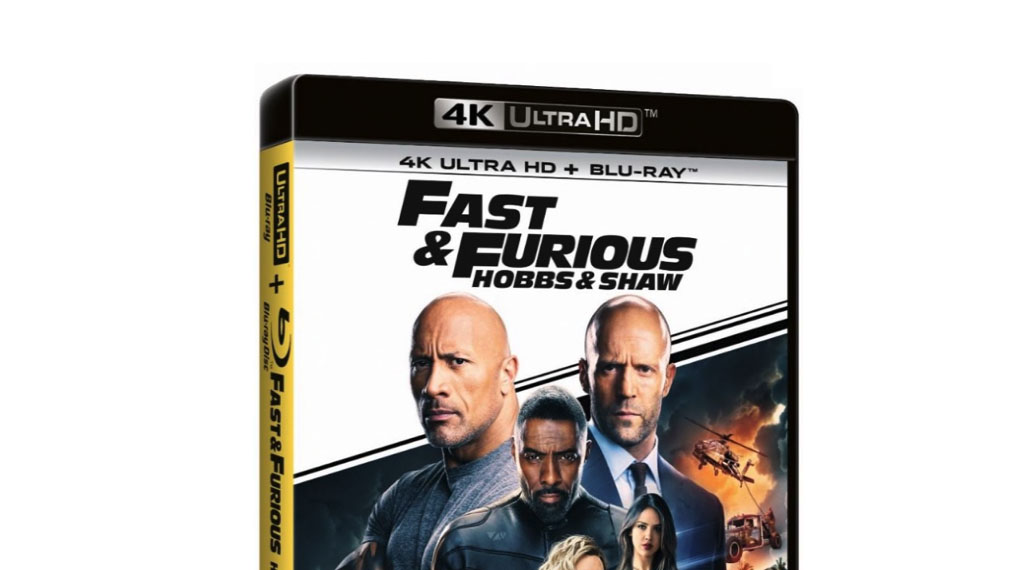TL;DR
Get ready for a wild ride with Hobbs & Shaw, the spin-off that injects new life into the Fast franchise! This over-the-top action flick pits Dwayne Johnson and Jason Statham against a deadly virus and a menacing Idris Elba, delivering absurd fun and spectacular stunts reminiscent of 80s action classics. While Ryan Reynolds' cameo and the age gap between Vanessa Kirby and Jason Statham might raise eyebrows, the film's pure entertainment value, driven by stunning visuals and immersive sound on UHD, makes it an undemanding yet highly enjoyable popcorn experience. You don't need to have seen any other Fast films to dive into this standalone adventure! Want to know if this high-octane thrill ride is worth your time? Read the full review!
The franchise began with The Fast And The Furious, which premiered nearly 20 years ago (2001) and was directed by Rob Cohen (Dragon: The Bruce Lee Story). The film achieved considerable success, leading to a sequel. This time, however, Vin Diesel, who starred alongside Paul Walker (1973-2013) in the original, was absent. The second film performed respectably, though slightly less so than its predecessor, and Paul Walker also departed. The third installment in the series, The Fast and The Furious: Tokyo Drift, released in 2006, initially appeared disconnected from the previous narratives. However, Vin Diesel was persuaded to make a cameo appearance at the film’s conclusion (reportedly, in exchange for regaining the rights to Riddick). Unexpectedly, the fans reacted enthusiastically, revitalizing a film series that seemed destined to fade after the third installment.
The series was so successfully revived that it spawned five sequels, with a sixth on the horizon. But prior to the original crew’s return (for the ninth time!), viewers are introduced to the high-octane spin-off, Hobbs & Shaw.
The fate of the world hangs in the balance after a genetically engineered virus falls into the wrong hands. Only Hobbs (Dwayne Johnson) and Shaw (Jason Statham) stand a chance of averting global catastrophe. The villainous Brixton (Idris Elba) relentlessly pursues the virus, which Shaw’s sister, Hattie (Vanessa Kirby), has injected into herself. The trio must collaborate to neutralize the virus before the capsules rupture and it becomes airborne.
It has been some time since encountering a film that is simultaneously so absurd and so entertaining. Logic is largely disregarded, with the film’s core appeal resting on action sequences, vehicular pursuits, and witty repartee. The experience is reminiscent of a well-executed action film from the 1980s, such as Tango & Cash. Director David Leitch (Deadpool 2) maintains a firm grip on the production, delivering impressively choreographed action sequences. However, the cameo appearance of Ryan Reynolds proved somewhat distracting. His improvisational performance, seemingly lacking direction, resulted in a character reminiscent of Deadpool, ultimately becoming tiresome.
Viewers may question the casting choice of Vanessa Kirby, who is twenty-one years younger than Jason Statham, as Shaw’s younger sister. This age disparity may require some suspension of disbelief. Idris Elba delivers a commendable performance as the antagonist, although a greater depth of character development would have been welcome.
The UHD edition offers a pristine visual experience, perfectly suited for action-oriented content. The image exhibits exceptional detail, providing striking clarity against the backdrop. Edge sharpness and black levels are rendered flawlessly. The Atmos sound design is among the most immersive available, promising an exceptional auditory experience when paired with a capable sound system. The supplementary material is also of noteworthy quality, containing both promotional content and genuinely insightful segments.
In conclusion, this is an undemanding but highly enjoyable popcorn film, and on Ultra-HD 4K it becomes a recommended addition to any collection. To address the question of whether prior viewing of the other films is necessary, the answer is no. Hobbs & Shaw functions effectively as a standalone feature.

